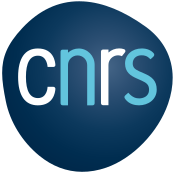|
Small regulatory RNAs (siRNAs, miRNAs, and piRNAs) have gathered a lot of attention over the past three decades. Small interfering RNAs (siRNAs) have become essential tools in reverse genetics, enabling screening in cell lines as well as genetically intractable plants and animals. Chemically synthesized siRNAs are also making their way into clinical applications. MicroRNAs (miRNAs) exhibit a low apparent specificity: complementarity to as few as six miRNA nucleotides within a transcript may suffice for miRNA-mediated gene repression. A typical miRNA can bind to hundreds of targets, and a specific transcript can be concurrently targeted by multiple miRNAs. As a result, a view emerged that miRNAs collectively contribute to the regulation of all physiological processes in animals. Piwi-interacting RNAs (piRNAs) are an animal-specific class of small regulatory RNAs that silence transposons in the germline, safeguarding the genome integrity of offspring. piRNAs also regulate non-transposable gene expression, contributing to various cellular and developmental processes, and defend certain animals against viruses.
The biological relevance of small regulatory RNAs in cell development and homeostasis has attracted considerable interest within the scientific community, with dozens of articles on these RNA species being published daily. However, the vast body of literature, some semantic challenges, and the remarkable diversity of cellular functions and molecular mechanisms of siRNAs, miRNAs, and piRNAs can make it challenging for non-specialists to navigate this field. The aim of this CNRS thematic school is to provide participants with a solid understanding of the biogenesis and function of small regulatory RNAs, to objectively discuss current controversies, and to explore practical approaches for detecting and studying the functions of siRNAs, miRNAs, and piRNAs in plants, animals, and more broadly, in several eukaryotes.
Like all CNRS thematic schools, InteRNAt offers high-level training for the scientific community — researchers, university lecturers, postdoctoral fellows, PhD and undergraduate students, engineers, and technicians. The school is primarily open to CNRS employees, but within the limits of available spaces, employees from other organizations such as Inserm, universities, and the private sector are also welcome. Unlike conventional conferences, the lectures at a thematic school follow a coherent, progressive structure; therefore, participants are expected to attend the full program. Limited number of participants (currently capped at 40 participants) ensures interactivity during the lectures. Additionally, the residential format — where lectures, housing, and meals are all on-site — fosters informal exchanges between participants and speakers. Lectures will be given in English. Most speakers are French-speaking, so if needed, questions can be asked in French.
Pre-registration is open until June 6, 2025 EXTENSION: until June 30, 2025. Registration of CNRS employees is free. Employees from other organizations should refer to the chart in the registration fee tab for further details. Registration fees cover attendance to the school, as well as lodging and meals, from lunch on Monday, October 6 to the lunch of Friday, October 10 included.
|
|
|
Support
Organizer, main financial support:

Sponsors :
|
